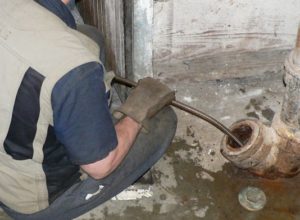How To Find a Clogged Sewer Lines Before It Becomes a Problem
 One of the worst things that can happen to your property is the development of a clog in the sewer line. If not treated properly it can spew raw sewerage into your home and property. This can be damaging to your walls, floors, appliances as well as the overall yard. In addition, one must consider the overall cost of repairs, potential health hazards to you and your family as well is the replacement of damaged plumbing.
One of the worst things that can happen to your property is the development of a clog in the sewer line. If not treated properly it can spew raw sewerage into your home and property. This can be damaging to your walls, floors, appliances as well as the overall yard. In addition, one must consider the overall cost of repairs, potential health hazards to you and your family as well is the replacement of damaged plumbing.
One way to avoid this potential hazard is to address concerns before they become serious. However, before you are able to do this you will need to know what causes them.
Main Causes Of Sewer Line Clogs
Every building will have a plumbing line that is designed to carry waste from dishwashers, sinks, showers and toilets into a main sewerage line under the street. These lines are known as either a sewer lateral or mainline. As with any other form of plumbing, these lines can become damaged or clogged. When these lines are underground, it becomes more difficult to realize and treat.
One of the simplest ways to determine if you have a clogged sewer line is the speed at which your appliances and fixtures drain. If they seem to be draining slow or not at all, it could mean there is a clog in the mainline.
Some other telltale signs of a clogged drain can include gurgling noises, sour smells or the shower backing up after the toilet has been flushed. If the sewer line has become clogged, it is more than likely from something inside of your home. Blockages can develop rather suddenly or over time, blocking the water in the line and causing a potential hazardous backup.
Some Common Clogging Hazards
-
Food and Kitchen Debris and Particles
-
Bathroom Waste
-
Tree and Vegetation Roots
-
Excessive Amounts of Grease Drained
Shrubs and trees planted throughout the yard will seek out water sources under the soil to help survive during dry seasons. In many cases the nearest supply of water is your sewer line, especially if it is close to the tree or shrub. While not an immediate threat, these roots will eventually penetrate the sewer line and create a blockage. This is generally more of an issue with older homes that have outdated pipes.
Sewer lines that are damaged, collapsed or cracked can exhibit similar symptoms to block sewer pipes which can result in flooding and backups in your yard or basement. Natural wear and tear, poor ground support or even the shift in of a ground from an earthquake can easily damage alter sewer lines that have been made from clay or cast-iron.
It is important to understand though that a clogged sewer line may not be the fault of your home’s plumbing. Main city lines can become clogged and produce similar results to clogs in your own homes line, which may flood and damage your property. Many times these blockages can be detected before they become a problem, however, they still do happen.
Another potential hazard for your pipes is flooding and rain. Sewers are only designed to handle specific amounts of water before they are unable to function properly and the water will go elsewhere. Typically, when this type of situation occurs the excess water will flow into residential sewer line leading to clogs and sewerage backups.
If you believe that your sewer line has become clogged or damaged, it is best to get in touch with a certified plumbing professional in Milwaukee to have your line serviced and repaired before the damage becomes excessive.
